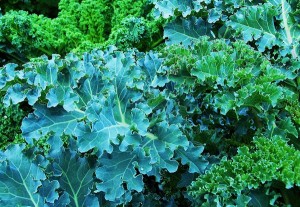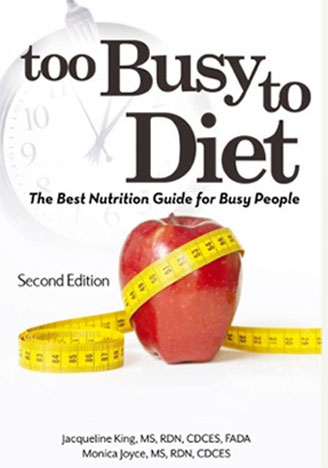Kale: For Some, Too Much of a Good Thing
in The Too Busy to Diet Blog on January 22, 2014

Written by Monica
Kale has grabbed the spotlight in the superfood department. It’s rated among the top ten healthiest foods, packing a lot of nutrition into a low-calorie vegetable.
Kale is a cruciferous vegetable and belongs to the Brassica family along with cabbage, broccoli and Brussel sprouts.
1 cup of kale contains about 30 calories, 7 gram of carbohydrate, 1 gram of fiber, 2 grams of protein, 29 mg sodium and 299 mg of potassium. Where kale stands out the most is in the vitamin department. It has 206% of the RDAs for Vitamin A, 1334% of Vitamin C, and 684% of Vitamin K. It is also contains phytochemicals such as carotenoids and flavonoids.
Beware of the downsides of kale, particularly since it has become oh-so-popular thanks to social media and celebrities touting its health benefits. Kale contains a chemical called goitrogen, which inhibits absorption of iodine. Goitrogens are naturally-occurring substances found in a variety of foods and have the potential to cause a goiter, which is the enlargement of the thyroid gland. You could wind up decreasing iodine by eating large amounts of kale, worsening your symptoms of hypothyroidism.
The good news is that goitrogens are usually completely destroyed during cooking. Eating kale raw in excess when you have hypothyroidism, though, can be a problem.
The juicing craze, especially the recent “green juicing’, has the potential to cause problems in people with thyroid disease. Green juicing includes a combination of raw green vegetables including spinach, cabbage, and broccoli, making this so-called healthy drink not so beneficial for some individuals.
Large amounts of Vitamin A and K, both fat-soluble vitamins that are stored in the body, can also be toxic.
Due to these facts, we can’t help but preach that “more is not necessarily better” when it comes to these assumed super foods. Many foods get far more attention than they deserve and may wind up causing serious health consequences.
We’ll be watching for what pops up soon in the never-ending saga of what is the next “healthiest food”. It is important to remember that no one food is a perfect food. Eat a variety of foods each day. Try to use a combination of different fruits and vegetables to avoid the harmful health consequences of eating too much of one food.
How to purchase kale: Look for firm, deeply colored leaves that have hardy stems.
How to store kale: Unwashed in an air-tight plastic bag for up to 5 days in the refrigerator.
Buy the Too Busy to Diet book
Get your copy of the definitive diet reference guide and healthy eating book today. Stop reading those misleading fad diet books and read an easy to follow book on how to lose weight and keep it off from actual Registered Dietitians.

Recent Posts
- Barbeque Turkey Meatloaf
- Pescado a la Veracruzana
- Juicy Pork Chops
- Rotasserie Chicken Casserole
- Grilled Salmon & Blueberry Salad